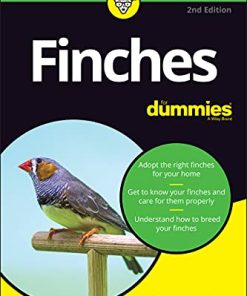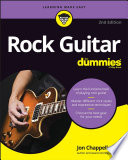Guitar Theory For Dummies 2nd Edition by Desi Serna 1119843177 9781119843177
$50.00 Original price was: $50.00.$25.00Current price is: $25.00.
Guitar Theory For Dummies 2nd Edition by Desi Serna – Ebook PDF Instant Download/DeliveryISBN: 1119843177, 9781119843177
Full download Guitar Theory For Dummies 2nd Edition after payment.

Product details:
ISBN-10 : 1119843177
ISBN-13 : 9781119843177
Author: Desi Serna
What is the opportunity?: Interest in the guitar has had a healty rebound in recent years after seeing declining growth in the first years of the 21st century. Guitar sales saw record numbers in 2020 thanks to people looking for ways to fill time during the COVID pandemic. The growth has been seen in learning resources as well. Fender Play, an online guitar learning community created by the well-known guitar manufacturer, jumped from 150,000 to 930,000 subscribers in 2020.
Guitar Theory For Dummies 2nd Table of contents:
Part 1: Getting Started with Guitar Theory
Chapter 1: Guitar Theory in a Nutshell
Why Learn Guitar Theory?
Navigating the Fretboard
Playing Scales
Working with Chords
Testing Your Guitar Theory Knowledge
Chapter 2: Navigating the Fretboard Like a Pro
Tracing Everything Back to Strings 6 and 5
Tracking Notes and Playing Songs with Octaves
Measuring the Space between Pitches with Intervals
Part 2: Working with Chords from the Ground Up
Chapter 3: Harmonizing the Major Scale to Form Triads and Chords
Building Triads and Chords
Playing through the Seven Triads of the Major Scale
Playing the Chord Sequence of the Major Scale
Chapter 4: Forming Chord Shapes with the CAGED System
Making Chord Inversions and Chord Voicings
Using the C Form
Using the A Form
Using the G Form
Using the E Form
Using the D Form
Connecting the Five CAGED Forms
Sample CAGED Chord Changes
Playing Minor CAGED Forms
Connecting the Five Minor CAGED Forms
Minor CAGED Chord Changes
Chapter 5: Adding Chord Tones and Extensions to Chords
About Chord Tones and Extensions
Adding 7ths to the Major Scale Chords
Working with 2nds and 9ths
Working with 4ths and 11ths
Playing 6th Chords and Using the 6th Interval
Adding Harmony with Pedal Point
Playing Pedal Tones with Two Guitars
Part 3: Getting to Know Keys, Modes, and Chord Progressions
Chapter 6: Playing Chord Progressions by Numbers
Drawing Chord Progressions from the Major Scale
Using Roman Numerals to Represent Chords
Visualizing Numbers on the Fretboard
Transposing to New Keys
Playing Common Chord Progressions
Starting Numbers on the 5th String
Playing Chord Progressions with Open Chords
Using the Nashville Number System
Chapter 7: Knowing Music Inside Out: Identifying Tonics, Keys, and Modes
Understanding the Relationship between Major and Minor Scales
Numbering the Relative Minor
Identifying the Modes of the Major Scale
Key Signatures and Common Discrepancies
Comparing Scale Formulas and Structures
Chapter 8: Following Key Changes
Getting to Know Key Changes by Switching Tonics within a Scale
Transposing a Progression
Changing Key and Progression
Using Modal Interchange and Borrowed Chords
Using the Circle of 5ths for Circle Progressions
Chapter 9: Dominant Function and Voice Leading
Chord Function and the Dominant Chord
Secondary Dominants
Voice Leading
Chapter 10: Filling the Gaps with Passing Chords
Getting to Know Chromatic Passing Chords
Getting to Know Diminished Chords
Playing Augmented Chords
Part 4: Playing Guitar Scales
Chapter 11: Preparing for Riffs and Solos with the Pentatonic Scale
Getting to Know the Pentatonic Scale
Covering the Fretboard with the Pentatonic Scale
Using the Pentatonic Scale as Major and Minor
Playing the Pentatonic Scale in Other Keys
Applying the Pentatonic Scale
Chapter 12: Playing Music’s Primary Melody Maker: The Major Scale
Getting Familiar with the Major Scale
Playing the Major Scale as Five Smaller Patterns
Practicing the Major Scale without Getting Bored
Applying the Major Scale
Playing Three-Notes-Per-String Patterns
Chapter 13: Playing in Modes and Using Modal Scale Patterns
Understanding Modes
Playing Ionian Mode
Playing Dorian Mode
Playing Phrygian Mode
Playing Lydian Mode
Playing Mixolydian Mode
Playing Aeolian Mode
Chapter 14: Exploring New Patterns with the Harmonic Minor Scale
Getting to Know the Harmonic Minor Scale
Using Harmonic Minor within a Pentatonic Pattern
Covering the Fretboard with Harmonic Minor Scale Patterns
Playing in a Harmonic Minor Mode
Getting to Know the Melodic Minor Scale
Using Harmonic Minor in Dorian Mode
Chapter 15: Playing the Blues
Recognizing Blues Elements in Popular Music
Playing Over a Blues V7 Chord
Tackling Whole Chord Progressions with the 12-Bar Blues
Playing the Blues Scale
Part 5: Part of Tens
Chapter 16: Ten Guitar Songs Worth Learning
“Wish You Were Here” by Pink Floyd
“La Bamba” by Los Lobos
“Jack and Diane” by John Mellencamp
“Brown Eyed Girl” by Van Morrison
“With or Without You” by U2
“Stairway to Heaven” by Led Zeppelin
“Smooth” by Santana
“Sunshine of Your Love” by Cream
“Johnny B. Goode” by Chuck Berry
“Jingle Bell Rock” by Bobby Helms
Chapter 17: Ten Sample Scale Applications
G-Em-C-D
E-B-C♯m-A
E-D-A-E
D-C-G-D
Am-G-F
Am-D
Am-Bm
Em-D-C-B7
F♯-B-C♯
E5-D5
Chapter 18: Tens Ways to Put Theory into Practice
Learn and Analyze Songs
Play Along with Songs
Record and Listen to Yourself
Become a Super Looper
Play with Others
Play Out
Practice a Little and Play a Lot
Study More Music Theory Resources
Set Reasonable, Realistic Goals
Have a Good Time All the Time
Appendix A: Audio Tracks and Video Clips
Discovering What’s on the Audio Tracks
Looking at What’s on the Video Clips
People also search for Guitar Theory For Dummies 2nd:
guitar theory for dummies 2nd edition pdf
guitar theory for dummies free pdf
guitar theory for dummies first edition
guitar theory for dummies barnes and noble
guitar theory for dummies video clips
Tags: Guitar Theory, Dummies, Desi Serna, opportunity, Interest
You may also like…
Animals & Pets - Animal Care & Pets
Animals & Pets - Birds
Physics - Theoretical Physics
Computers - Programming
CODING ALL IN ONE FOR DUMMIES 2nd Edition by Chris Minnick 1119889571 9781119889571
Arts - Music
Animals & Pets - Animal Care & Pets
Computers - Algorithms and Data Structures
Algorithms For Dummies (For Dummies (Computer/Tech)) 2nd Edition Mueller












